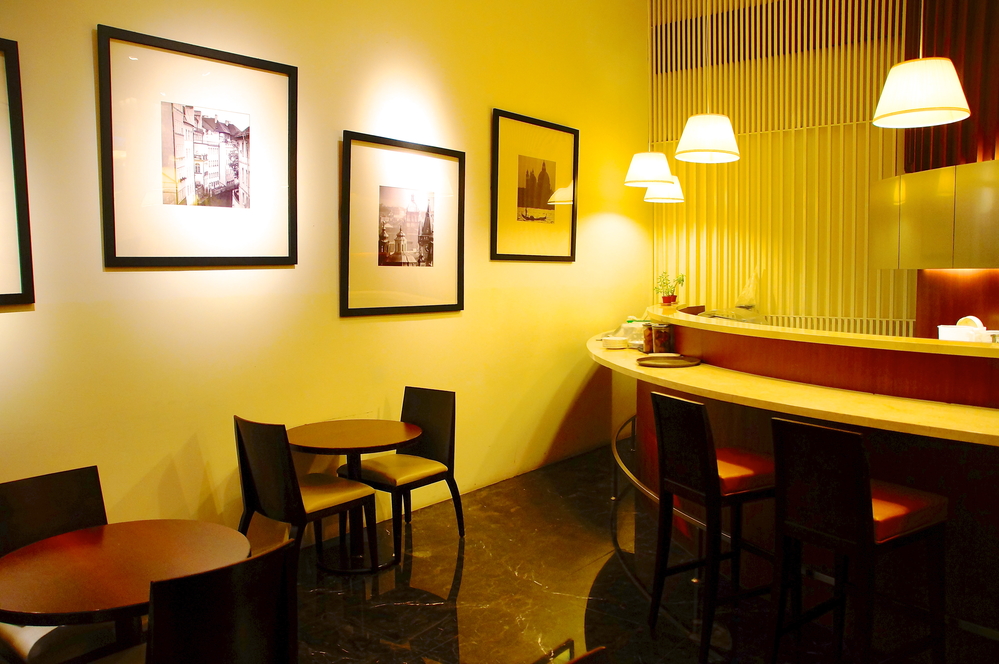Best Asian Restaurant Islamabad: Experience Tastes from Across Asia
Best Asian Restaurant Islamabad: Experience Tastes from Across Asia
Blog Article
Savor Authentic Oriental Food With a Pan-Asian Spin for a Cooking Experience
Beginning on a cooking trip through genuine Oriental cuisine, improved with a Pan-Asian twist, supplies a special chance to check out the rich tapestry of tastes that define the region's varied cooking practices. This experience welcomes you to appreciate the beautiful equilibrium of preferences-- pleasant, salted, spicy, and sour-- integrated by aromatic natural herbs and flavors. Imagine the innovative combination of Thai curry and ramen or the unexpected pleasure of sushi burritos. As you contemplate these attracting meals, take into consideration the cultural stories and historic influences that shape them, each bite offering a tale waiting to be discovered.

Exploring Pan-Asian Flavors
In the realm of global gastronomy, Pan-Asian cuisine sticks out for its impressive variety and the harmonious interaction of tastes from various Eastern societies. This culinary technique celebrates the distinct active ingredients and abundant practices discovered throughout the continent, creating a tapestry of preferences that is both interesting and satisfying. Secret to Pan-Asian food is its capacity to balance contrasting tastes-- wonderful, salted, spicy, and sour-- while highlighting the quality and high quality of each ingredient.
From the umami-rich soy sauce of Japan to the fiery chili peppers of Thailand, Pan-Asian cuisine uses a substantial palette of tastes. These aspects are frequently integrated in creative means, enhancing recipes with layers of intricacy. As an example, using great smelling natural herbs such as lemongrass and cilantro, common in Vietnamese and Thai cuisine, includes a revitalizing brightness to dishes, while the consolidation of coconut milk delivers a creamy, rich appearance.
The focus on fresh produce and fragrant seasonings ensures that each dish is not just a feast for the taste buds yet also for the senses. Pan-Asian food welcomes diners to start a culinary journey, discovering the huge and varied landscapes of Oriental gastronomy with every bite.
Fusion Dishes to Attempt
While Pan-Asian cuisine is celebrated for its typical tastes, the modern-day cooking landscape is progressively accepting blend dishes that blend these traditional elements with impacts from other areas. This ingenious approach not just honors the rich heritage of Eastern cookeries yet likewise presents novel preference experiences that appeal to contemporary palates.
A prime example of such a blend dish is the Korean-Mexican taco, where seasoned bulgogi beef is covered in a warm tortilla, covered with kimchi and a zesty gochujang-infused salsa. This mix weds the vibrant, savory tastes of Korea with the vivid, fresh elements of Mexican food. Similarly, sushi burritos have actually gotten popularity, amalgamating the fragile artistry of Japanese sushi with the hearty, hand-held comfort of a burrito, typically including fusion components like tempura shrimp and avocado with a drizzle of wasabi mayo.
Another noteworthy meal is Thai curry ramen, which infuses the velvety, fragrant flavors of Thai curry right into the comforting brew of conventional Japanese ramen, producing an unified blend that tantalizes the senses. These fusion meals extend beyond plain uniqueness; they represent a culinary dialogue between cultures, encouraging exploration and advancement in the globe of Pan-Asian food.
Crucial Active Ingredients and Spices
To truly appreciate Pan-Asian cuisine, one have to recognize the vital components and spices that develop its foundation. This diverse culinary design draws from an abundant tapestry of Oriental customs, utilizing an unified mix of tastes and appearances.
Fragrant components are pivotal, with garlic, ginger, and lemongrass being ubiquitous throughout various Pan-Asian recipes. These active ingredients provide an aromatic base that boosts the intricacy of flavors. Seasonings such as star anise, cardamom, and cinnamon introduce warmth and personality, resembling impacts from areas like China and India.

Food Preparation Techniques and Tips
Grasping the art of Pan-Asian food calls for familiarity with its distinct food preparation techniques, each contributing to the lively tapestry of flavors this cooking custom is celebrated for. Central to these techniques is the stir-fry, a rapid cooking method that protects the dietary integrity and brilliant shades of ingredients. Making use of a wok, the stir-fry technique permits for also warmth distribution, crucial for achieving the characteristic structure and flavor balance of Pan-Asian dishes.
Another fundamental technique is steaming, particularly prevalent in Chinese cuisine. This gentle technique keeps the all-natural tastes and nutrients of active ingredients, making it ideal for fish and shellfish and veggies. Dumplings, a precious staple, often benefit from steaming, resulting in soft, succulent textures.
Grilling, additionally indispensable, imparts smoky depths to recipes such as Oriental bulgogi or Japanese yakitori (Instagrammable restaurants Islamabad). This method commonly includes marinating ingredients, allowing tastes to permeate deeply before food preparation over an open fire or warmer
Lastly, understanding the art of stabilizing flavors-- pleasant, sour, salty, bitter, and umami-- is crucial. Correctly layering these components can boost a dish from regular to amazing, using a complicated and pleasing culinary experience that embodies the significance of Pan-Asian cuisine.
Eating Experiences Worldwide
Throughout the globe, Pan-Asian food uses an unrivaled eating experience, celebrated for its abundant tapestry of flavors and vibrant discussions. This check my blog culinary phenomenon has actually gone beyond cultural boundaries, recording the hearts and palates of food lovers worldwide. In multicultural cities like New York, London, and Sydney, Pan-Asian dining establishments work as fusions where cooking practices from Thailand, Japan, China, and beyond merge, offering restaurants with an eclectic mix of dishes that highlight the region's variety.
The international appeal of Pan-Asian cuisine depends on its ability to provide both credibility and technology. Chefs skillfully wed typical active ingredients such as lemongrass, soy sauce, and miso with modern techniques, resulting in meals that are both acquainted and refreshingly brand-new. This combination enables restaurants to start a cooking trip that respects heritage while embracing modernity.
Furthermore, dining experiences are elevated via thoughtfully designed environments that reflect the ethos of Pan-Asian visual appeals. From minimal Japanese-inspired interiors to dynamic Thai-themed areas, each restaurant provides a special atmosphere that matches the culinary offerings. Therefore, clients are not just taking in a meal but partaking in a social experience, making Pan-Asian dining a genuinely worldwide phenomenon.
Conclusion
The expedition of Pan-Asian cuisine supplies an extensive understanding of the complex interplay of flavors and culinary practices More about the author throughout Asia. By accepting fusion meals such as Thai curry ramen and sushi burritos, the cooking trip not only highlights the adaptability of conventional components but additionally showcases cutting-edge contemporary strategies. This gastronomic adventure, improved by essential seasonings and cooking techniques, provides an unique possibility to appreciate the social variety and cooking artistry that define Pan-Asian food on an international range.
Beginning on a cooking trip with authentic Asian food, improved with a Pan-Asian twist, uses a special chance to explore the abundant tapestry of tastes that define the area's varied culinary practices.In the realm of global gastronomy, Pan-Asian cuisine stands out for its remarkable variety and the unified interplay of flavors from various Eastern societies. Trick to Pan-Asian cuisine is its ability to stabilize different tastes-- pleasant, salted, spicy, and sour-- while highlighting the quality and high quality of each component.

Report this page